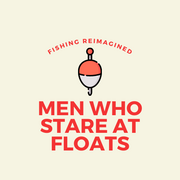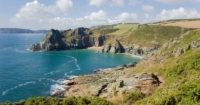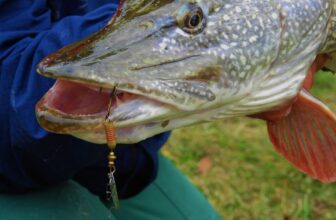Before you fish for bass you need to understand the bass. Whilst that may sound a little literary it’s important to understand a fish’s feeding habits to give yourself the best chance of catching them. This guide to bass fishing in the UK is a good place to start.
Bass are aggressive predators who tend to hunt and feed in rough water and over rough ground that’s rich in structure. They roam the waves waiting for white water to break before slamming baitfish into a state of discombobulation. It’s only desperate (or potentially foolhardy) bass that hunt into crystal clear, calm waters in the bright light of day. The majority of the time bass hunt in darker conditions in surprisingly shallow water.
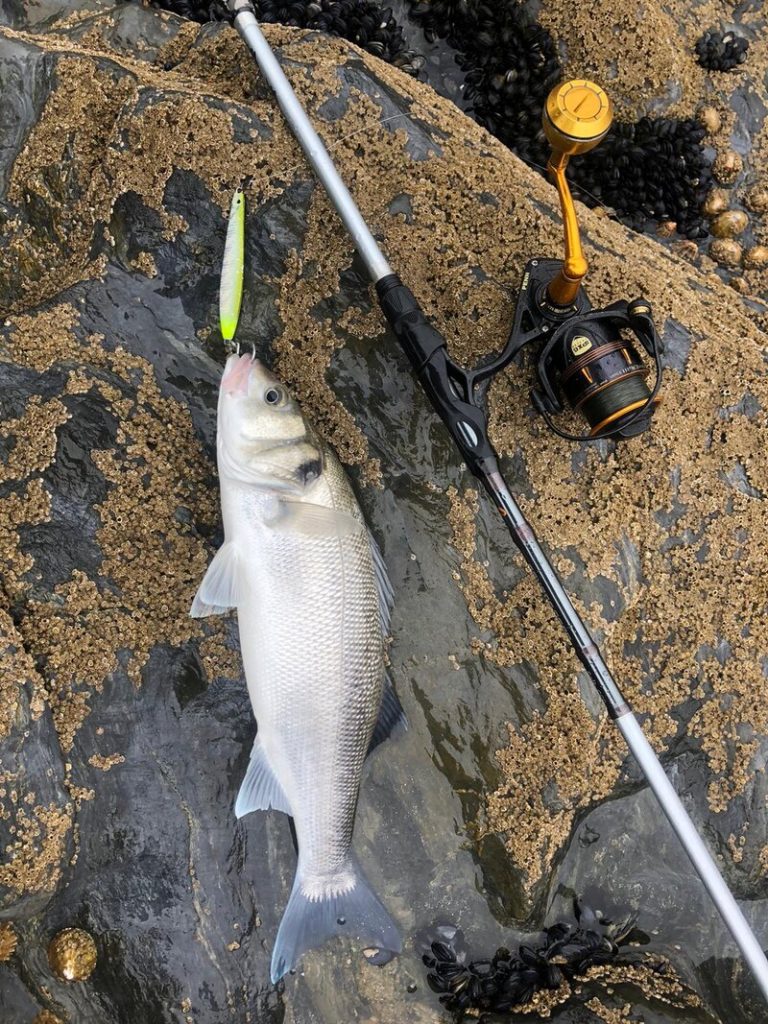
Table of Content
Top bass fishing tips in the UK – summed up
To sum up our top tips into three bite-sized chunks, it would be:
- Choose an area with structure, rough water and varying depths
- Master your retrieval styles (and bring backup bait and lures)
- Fish uncomfortable times – dawn is a personal favourite (we’ve found the dead of night brings the biggest fish)
You can read more about the best conditions to catch bass in the UK here, where we break down how rain, tide, pressure and wind affect the fish.
Choose the area carefully
To start with, choose one of the UK’s best bass fishing locations. Then search for underwater gulleys, gorges, channels and rocky bottoms that are great places for baitfish – and bass – to hide in wait. Bass happily hunt in water as shallow as one foot deep and you’ll find that the snaggiest places – kelp forests, reefs, shipwrecks – are unfortunately your best bet. So find areas rich in structure with fast-flowing water and cast along its edges.
This is where Google Maps is your best friend. Prior to any bass fishing trip in a new location, it’s essential to look for areas where you think the fish are more likely to be based on their behaviour. The terrain feature helps you find structure and varying water levels whilst street view gives you a clear picture of area accessibility.
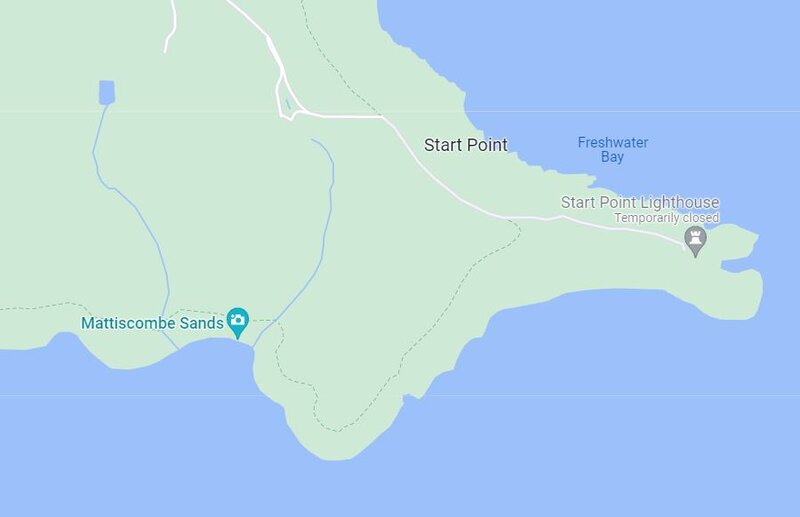
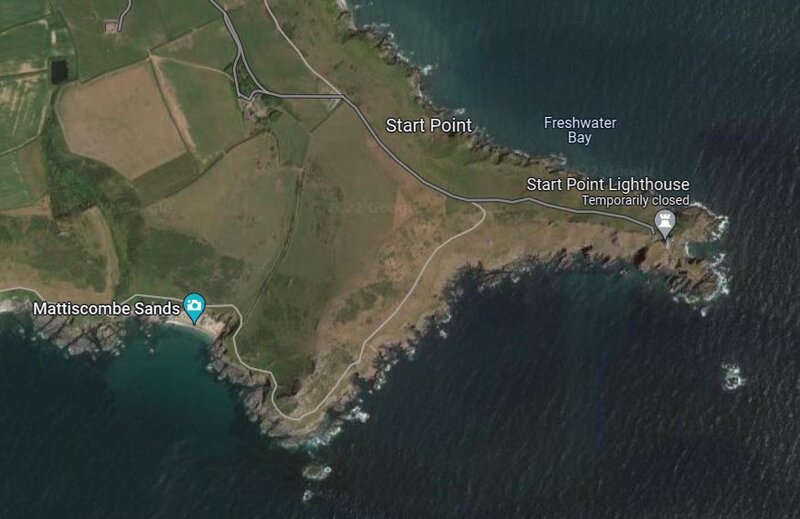
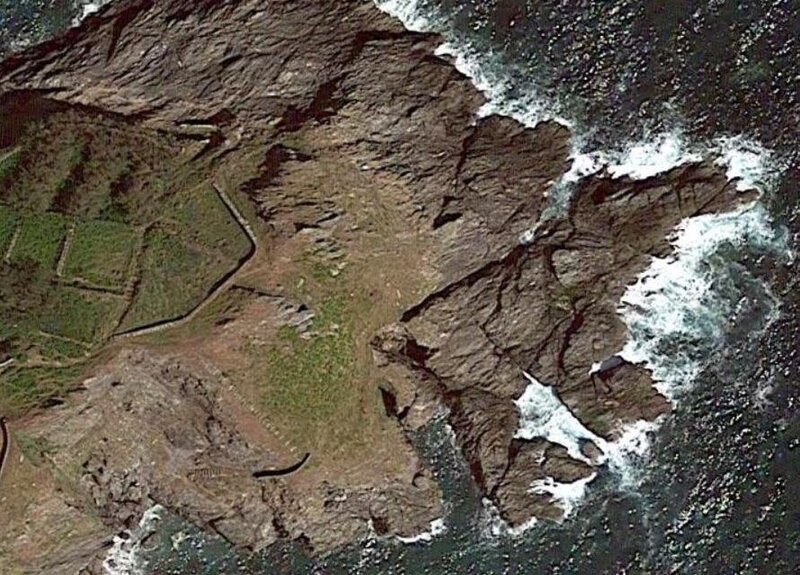
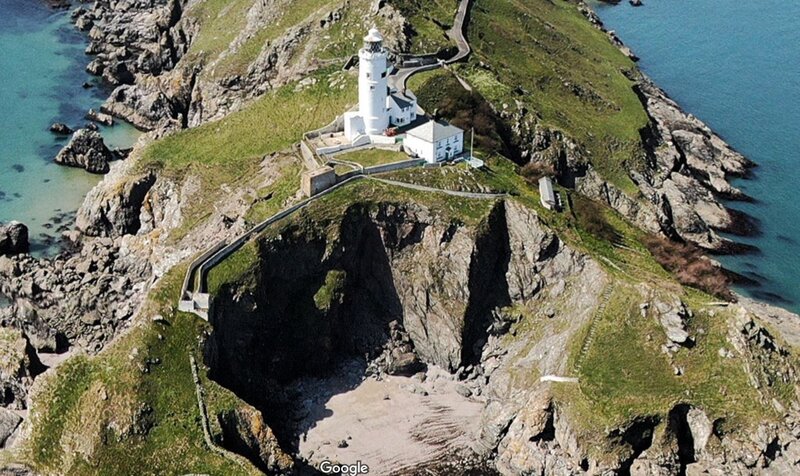
For example, if you notice a gully running perpendicular to the beach or a steep dropoff close to the shore, fishing parallel to the beach (along these features) would be a good starting point. And something you’ll only figure out with some prior research.
Check the tide
Typically bass fishing is best somewhere around two hours on either side of the high and low tide. But calmer conditions when the tide is at its highest and lowest are – from experience – pretty awful for bass fishing. The turbulence created by the volume of the ebb and flood is almost a non-negotiable when it comes to fishing for bass.
You check the tide times for your fishing location online (obviously). This tide times checker is what I normally use to work out when peak bass fishing times will be.
Tidal bass fishing theories suggest that shallower, rocky ground will fish best on the ebb (as the tide goes out) as baitfish are forced to clear the area. Whereas deeper marks fish better on the flooding tide right up until the high mark. This is, of course, too simplistic. But it’s an interesting look into how you should think about fishing for bass.
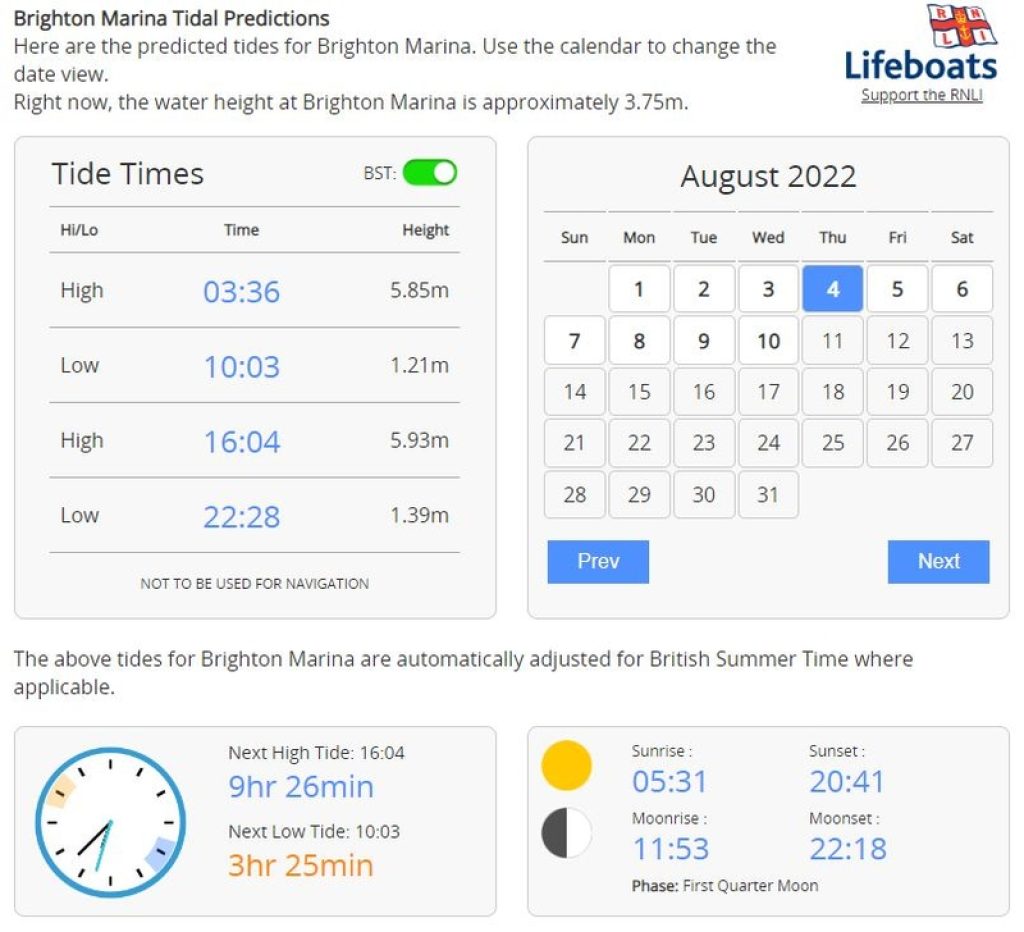
Looking at the above tidal times at Brighton Marina as an example, we know that bass don’t tend to fish well at either high or low water. They want some instability caused by the ebb and flood. Based on this I’d recommend starting fishing around an hour after high tide (at 17:04) right up until the ebb at 22:28. That would give you the chance to fish the mark at different conditions in lower light.
Bass fishing is tough. It turns out the sea is quite a large and unforgiving place for fishermen (and women) and you need to use the elements to give yourself the best opportunity. The conditions around both high and low tide create better bass fishing conditions simply because the rougher water and faster flow foster better conditions for predators to go unseen.
Use the right tackle
The right tackle does differ slightly depending on your fishing style and the ground you’re fishing on. Sea fishing with lures in the UK can be very different to freshwater lure fishing and lure fishing for bass has very different requirements to float fishing for bass.
But there are some top tips when it comes to the gear you’re using:
- Use a braided line with a minimum 15lb breaking strain with an abrasion-resistant leader. Fluorocarbon tends to be best.
- The best bass fishing rods are usually around 8.6″ long with a, supple and sensitive tip and a casting weight of around 9 – 35g
- If you’re fishing with weight and bait from the shore, you should increase the length of the rod
- Use a reel with upwards of 150-yard line capacity
- And buy a lure box and lure fishing bag
Travel light (if you’re shore fishing)
Bass fishing marks are notoriously rough. Beautiful, but rough. That’s what makes the fishing so spectacular. But traversing slippery rocks, cliff edges and potentially miles of beach is not the time and place to bring your entire angling back catalogue.
In our opinion, the essentials are:
- Rod and reel (it’d be a short trip without them)
- Lures
- Spare fluorocarbon (typically around 15 – 20lb breaking strain)
- Lure clips and swivels
- Pliers
- Hat / polarised sunglasses (for sunnier conditions)
We typically keep all of these in a shoulder bag that’s lightweight, easy to access and has a rod holder attached to the side. You can find out more in our guide to lure fishing for bass.
The 12 Best Sea Fishing Spots in Devon
Pre-tie your rigs
As bass hunt in shallow, weedy, rocky conditions in peak tidal periods, losing your rig is a pretty common occurrence.
There’s nothing more frustrating than hooking into a bass, noticing that this bass is in fact part of a school in the middle of a feeding frenzy, breaking your line and having to retie quickly in windy conditions. Particularly as a relative novice angler. If you’ve been fishing for hours, to snap off at the crucial moment is pretty devastating.
To combat this, the best thing to do is pre-tie some spare rigs. If you’re lure fishing (with swivels) bring two spare lengths of fluorocarbon leader attached to a lure clip and swivel at either end. This means I can re-tie in a couple of minutes and minimise the risk. Maximising time in the water is key – all those minutes add up over time. If you’re bait fishing, a spare weighted rig will almost certainly come in handy too.
Bring spare lures
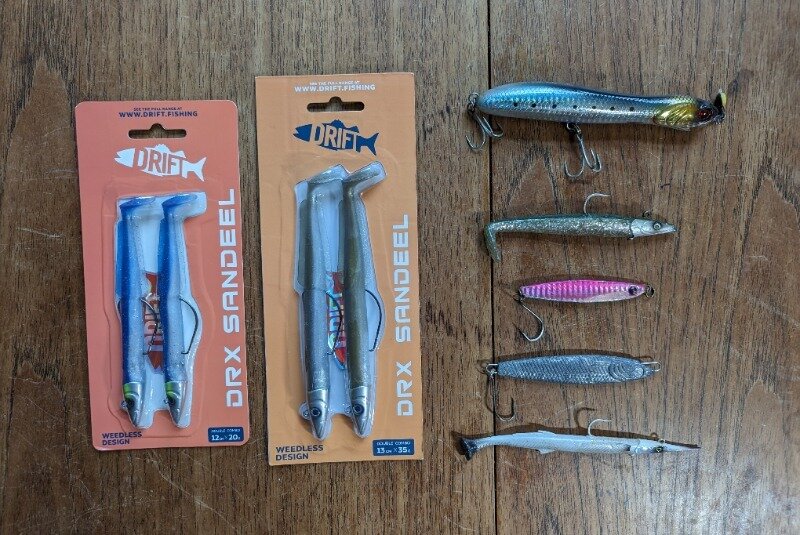
This is an obvious tip, but it’s not uncommon to lose three or four lures in a session. If the bass are really feeding and the conditions are particularly snaggy, multiple spare lures are essential.
Typically bringing along three or four different types of lure – soft plastics, distance casters – like Savage Gear Surf Seekers – and a specialist sinking and/or floating one should suffice. Just make sure you bring at least two spares of each. The last thing you want is to run out of the lure that’s aiding your success.
Vary your lure’s colour, retrieve and swimming style
Whilst bass are apex predators – on the British coast at least – they’re cautious. They can hear and sense when things are out of the ordinary. This study on how noise pollution was affecting black sea bass’ natural behaviour found that younger bass were more sensitive to ocean sounds and exhibited unnatural behaviour.
This goes some way to determining how ‘natural’ your presentation needs to be and how important trialling lures with different colours, swimming styles and retrieval speeds is. Bass may be present at the mark you’re at, but they may not be feeding on the surface. Or the naturally coloured lure may be getting washed out in cloudy water.
So it’s important you have spare lures and lures that sink, float and in between, varying your retrieval style and speed. Find our favourite bass lures here.
Fish at dawn, dusk or at night
Bass – like any predator – are unlikely to hunt in broad daylight. Particularly if the conditions are calm and there’s minimal structure. Hunters are, by and large, opportunists. They prey on the weak, incapacitated or unaware. So fishing at dawn and dusk for two hours on either side of low and high tide is a fantastic place to start. As is our guide to the best weather conditions for fishing.
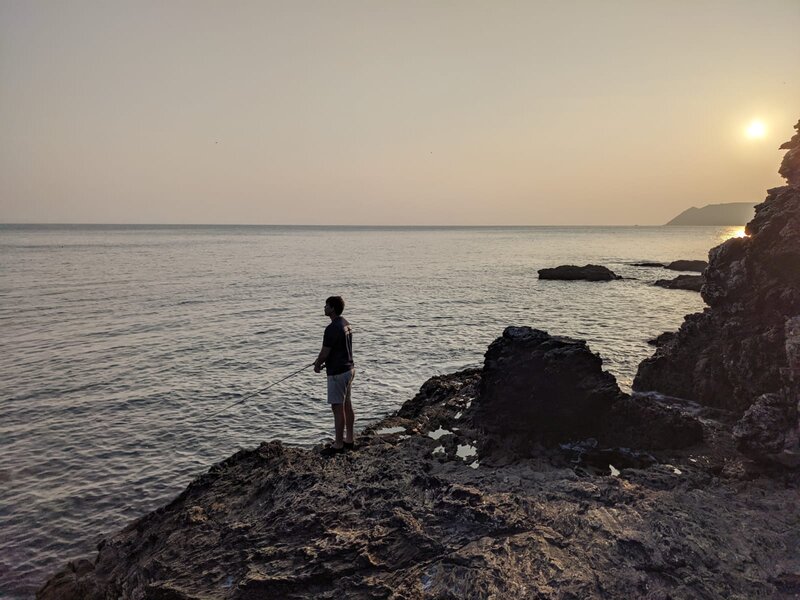
If you’re fishing from the shore and the sea is calm, it’s unlikely bass will come out to feed during the day. Your best bet would be to fish at night with strong-smelling bait like peeler crab, squid or mackerel when the bass will feel more confident.
Bring bait
If the weather’s calm, the sun’s out and the seas are crystal clear lure fishing is unlikely to work effectively. Whilst it is – in our opinion – the best type of fishing there is, you want to have a backup option that smells like success. Success in this case is likely to smell like mackerel, peeler crab or squid.
The right bait to use depends on the time of year and ground you’re fishing on. If bass are feeding over rough ground, they’re more likely looking for peeler crabs. If they’re feeding further out, then squid or mackerel would be more appropriate. This is why understanding the bass and their habits is so important.
Wear the right gear
What constitutes the right gear for bass fishing is fairly seasonal and weather-specific.
The essentials are:
- Grippy shoes for walking across potentially slippy, spiky rocks (you may want to consider some of the best fishing boots)
- A tackle bag – I’d recommend a shoulder bag for the majority of your gear and a waist pouch for easy access to essentials
In summer months a trusty hat, pair of polarised sunnies, shorts or light trousers and some sun cream. In winter the above can still apply, but you better bring a waterproof fishing jacket and trousers as the wind can be pretty unforgiving on the coast.
And whilst I wouldn’t class waders as essentials, this completely depends on how you’re fishing. Whilst bass are present in particularly shallow water, it can be difficult to reach some spots without waders.
FAQs
The best bass fishing tips for beginners
If you’re just getting started bass fishing, then like any type of fishing it’s wise to go with someone who knows what they’re doing as bass fishing can be tough and – unfortunately – expensive. Or just to take a boat fishing trip first.
On top of this, I’d suggest taking advantage of the conditions and fishing at dusk/dawn when the tide begins to ebb or flood. Finally, ensure you have used Google Maps to study bass fishing marks when there is an underwater structure and – crucially – a way to reach it by foot.
The best bass fishing tips in the UK
The best tips for bass fishing in the UK are – in my opinion:
- Use Google Maps to find appropriate fishing marks with good access
- To check the weather and tidal times before you head out, try to tie these in with lower light conditions that are better for hunting
- Pack light, with multiple spare lures and pre-tied rigs, but appropriately for the weather
- Wear good shoes and bring polarised sunglasses if it’s sunny
Tags: BassSea Fishing
Hi, I'm Harry. A keen, albeit exceedingly average fisherman. I've spent the last few years trawling London's waterways with - if I'm being kind - varied success and would love to help you avoid the mistakes I have made.
